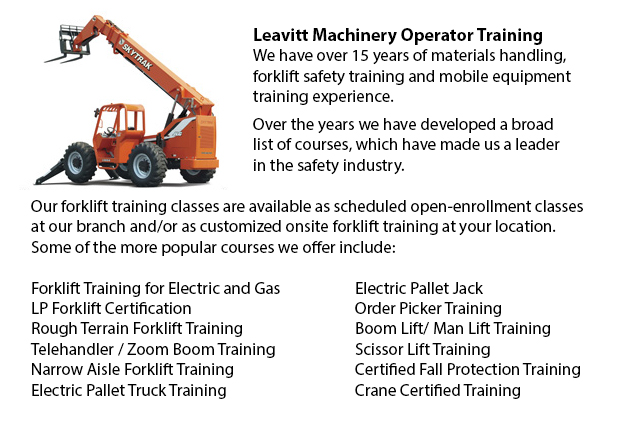
Telehandler License Glendale - A telehandler or telescopic handler is a machine that is normally used in industrial and agricultural applications. It has the same look to a forklift and even works in a similar manner, even if, the telehandler is more of a crane than a forklift. It has a telescopic boom that could extend forward and upward from the motor vehicle. The boom has the capability to fit one of various attachments including a lift table, muck grab, pallet forks or a bucket.
Pallet blades are the most popular attachment for the telehandler. This particular equipment is most often utilized for moving loads to and from places that a standard forklift will find inaccessible. Telehandlers are especially useful for placing loads on rooftops for example, or for removing palletized cargo from with a trailer. A lot of the tasks which a telehandler could accomplish would otherwise require a crane and this particular piece of equipment could be costly, not practical and not always time efficient.
Because the boom extends or raises while bearing a load, it also acts as a lever. Despite the counterweights in the back, this causes the machine to become more and more unstable; thus, the advantage of the telehandler is really its greatest limitation. As the working radius increases, the lifting capacity decreases. The working radius is defined as the distance between the center of the load and the front of the wheels.
The telehandler with a 5000 lb capacity for instance, with a retractable boom can safely lift as little as 400 lb at a fully extended boom at a low boom angle. Equivalent machines with a lift capacity of 5000 lbs and a retractable boom which could support as much as 10,000 lb with the boom raises to roughly 70 degrees. The operator has a load chart to help determine whether a particular lifting task can be completed in an efficient and safe manner. This chart takes into account the weight, height and the boom angle.
Several telehandlers come outfitted with a computer that uses sensors to be able to monitor the motor vehicle. These sensors will warn the operator and some are capable of cutting off further control input if the limits of the motor vehicle are exceeded. Several telehandler kinds are also outfitted together with front outriggers which are known as mobile cranes. These greatly extend the lifting capability of the machinery while it is stationary.
-
Aerial Lift Train the Trainer Glendale
Aerial Lift Train the Trainer Glendale - The Aerial Lifts Train the Trainer Certification Program will teach trainers how to effectively train operators in safe industrial mobile machine operation. Trainers are given in-depth instruction on aerial li... More -
Forklift License Glendale
Forklift License Glendale - In North America, acquiring a forklift license or forklift certification involves hands-on and classroom training. Regulatory control over certification, training and license for powered industrial truck operators falls un... More -
Telehandler Certification Glendale
Telehandler Certification Glendale - Telehandler certification programs are both for operators who have some experience driving a typical forklift and for individuals with no experience. The real-world training provided by these courses produces grad... More -
Operator Safety Training and Re-Qualification Training and In-House Instructor Training in Glendale
Forklifts are used in almost all warehouse operations and in boat yards and in industrial construction sites. The reach feature of a forklift is a very important component utilized in a variety of applications like for example when a shelving system... More -
Manlift Training Glendale
Manlift Training Glendale - Different manlift training programs include the content and review of manlift devices. An important portion of the program is the practicum where students show their practical ability and knowledge to safely operate a manl... More -
Crane Certification Glendale
Crane Certification Glendale - The Crane Certification Program consists of the industry suggested subject matter which will teach the safe and efficient operation of cranes. The individual would train in the following: how to identify cranes and thei... More -
Loader Ticket Glendale
Loader Ticket Glendale - Gehl articulated loaders have been made to suit practically every condition. They offer optimal maneuverability and great traction due to a heavy-duty oscillating joint that provides 45-degree rotating angles right and left,... More -
Crane Ticket Glendale
Crane Ticket Glendale - The new version of a crane could be either simple or complex, and cranes vary based on their use. Mobile cranes, for instance are rather simple. A telescopic boom or steel truss mounts its movable platform. A system of levers... More

Forklift Training Glendale
TOLL FREE: 1-888-254-6157
Glendale, Arizona
forkliftcertificationglendale.com
Email Us
About Us


